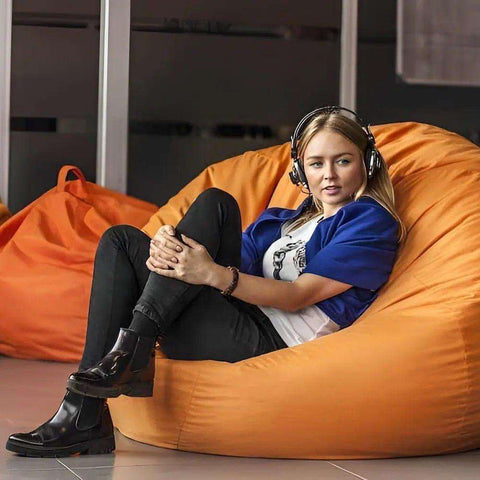What is mould? Find out what mould is, the conditions it can cause, where it’s most likely to grow, and how you can test for it.
What is mould, exactly? On the surface, it looks like a furry, chalky, or sometimes colourful substance on damp surfaces. But mould (also spelled mould in American English) is a living organism—part of the fungi kingdom—and is one of the oldest life forms on Earth. The profuse production of asexual spores causes the dusty texture of many moulds. Its presence often raises the question: what causes mould, and why does it grow where it does? Let’s explore further.
You can find mould almost everywhere, both indoors and outdoors. Mould is present virtually everywhere, thriving in a wide range of environments.
What is mould?
Mould is a member of the fungi family—a separate branch of life, different from plants and animals. Scientists once thought it was a type of plant, but now know it’s more like an animal due to its unique digestive process. You can find mould almost everywhere, both indoors and outdoors. In nature, most moulds grow on rocks or in damp, moist areas where other species can’t survive. Mould grows in wet, dull, and poorly ventilated spaces. For example, mould often appears on bathroom ceilings or behind kitchen appliances where moisture accumulates. In modern homes, mould can grow in plumbing, timber, paper, walls, fabrics, carpets, and furniture.
What causes mould spores?
Mould is a natural part of the environment and helps break down dead organic matter, like tree bark or leaves. It reproduces by releasing tiny spores into the air. When these land on a surface, they can grow and divide into new mould cells. Most people will not experience any health problems from coming into contact with mould. Mould is an extremophile, meaning it can survive in tough conditions. It will grow on almost any surface with moisture, so it often appears in homes. Activities such as cooking can increase indoor humidity, providing more opportunities for mould to develop, especially in kitchens without proper ventilation.

Different Types of Mould
The types of mould and mildew you might find fall into three main categories:
1. Toxigenic
Toxigenic moulds can cause serious health issues, from eye irritation to immune problems. They produce mycotoxins—chemicals on the surface of the mould spores. Inhaling these substances can cause inflammation, cell damage, and, in some cases, organ failure. These health risks are particularly pronounced when individuals are exposed to large amounts of mould spores over time.
2. Pathogenic
Pathogenic moulds are infectious, like germs. If they enter your body, they can multiply and cause infections, sometimes resembling bacterial pneumonia.
3. Allergenic
Allergenic moulds are the least harmful. They can still cause problems for people with allergies or asthma, but are usually more of a nuisance than a serious threat.
What health risks can mould cause?
Most homes have low levels of mould that don’t cause problems. But sometimes, mould can lead to infections and other diseases. Very rarely, people may develop a severe mould infection, usually in the lungs.
If you are concerned about mould-related health risks, seek further advice from your local public health unit or healthcare provider.
Aspergillosis
Aspergillosis is caused by Aspergillus moulds, which are common indoors. Most people inhale Aspergillus spores every day without experiencing any health issues, but these spores can occasionally cause problems such as a stuffy nose, headache, coughing, chest pain, and fever. Health effects of mould exposure include a runny or blocked nose, eye and skin irritation, and sometimes wheezing.
Blastomycosis
Blastomycosis is caused by Blastomyces, a fungus found near waterways. Spores can enter the lungs and cause symptoms such as fatigue, chest pain, and weight loss.
C. neoformans infection
C. neoformans is found worldwide. Most people never contract it, but those with weakened immune systems can develop serious infections of the lungs or nervous system, characterised by symptoms such as neck pain, nausea, confusion, and fever.
Sporotrichosis
Sporotrichosis, also known as rose gardener's disease, is caused by the fungus Sporothrix. It often infects people through cuts in the skin, causing bumps or, if inhaled, cough and chest pain.
Stachybotrys chartarum infection
Stachybotrys chartarum is a type of black mould commonly found in homes, often on drywall. Its effects can range from allergies to trouble breathing, and symptoms can vary from person to person.

How can you prevent mould growth?
Mould needs water to grow. To reduce mould in your home, focus on removing sources of moisture. The main causes of household mould are leaking pipes and rising damp. Mould can also grow in bathrooms from water vapour, especially after showers, if moisture is not properly managed. You can’t control mould completely, as it’s a natural part of the environment, but you can stop it from growing out of control. Here are some tips:
-
Fix leaks and dampness. Repair leaking pipes and clean up spills quickly.
-
Reduce dust. Mould spores use dust to settle and grow.
-
Improve ventilation. Ensuring adequate ventilation is essential, as extra airflow helps reduce humidity and stops mould from settling.
-
Reduce condensation. To prevent mould growth, reduce condensation by using extractor fans, opening windows, and wiping down wet surfaces, especially in kitchens and bathrooms.
What's the difference between mould and mildew?
People often use the terms "mould" and "mildew" interchangeably, but they are distinct. Mould is a microscopic fungus that grows in filaments called hyphae and usually thrives on materials with organic compounds. Mildew grows best in very damp environments, such as windowsills and shower walls. Common types of mildew include powdery mildew (characterised by grey or white blotches on plants) and downy mildew (which starts yellow and then turns brown). Both mould and mildew produce a musty smell, especially in places with poor airflow. Mildew usually grows in a flat, powdery pattern, while mould is fuzzier or slimier and can be black, brown, grey, green, or blue.
Want to know how to remove mildew from outdoor furniture? Read our guide here.
Where to look for mould in your home
The most common places for mould to grow in your home are bathrooms and kitchens without extraction fans.
-
Wet carpets
-
Areas around sinks or bathtubs
-
Shower cubicles, especially in the hinges
-
Behind walls (where pipes might leak)
-
Around windows (especially those left open)
-
Along water-damaged walls
-
Bathroom grout, between tiles
It's essential to maintain these areas in good repair to prevent mould growth.
How to test for mould
If you notice stains, odours, or discolouration in your home, you might wonder if it’s mould. Stains often appear in bathroom grout or on damp walls. Mould often resembles a stain or smudge and may have a musty smell. Odours are common in bathrooms, basements, and attics. If you think you have mould, you can get a professional to test it. They’ll take a sample and see if mould grows in a petri dish. After a few days, you’ll get a report on what species are in your home.
For further information on mould testing, health advice, or tenant rights, consult your local health authority or relevant government resources.
How to remove mould
Removing mould from your home requires a careful and thorough approach to ensure it is eliminated and does not return. The first and most important step is to identify and fix the source of moisture that is causing the mould growth—this could be water leaks, high humidity, or inadequate ventilation. Addressing these issues is crucial to preventing mould from returning.
Once the source of moisture is under control, you can begin to remove mould from affected areas. Start by wearing rubber gloves and a mask to protect yourself from mould spores, which can trigger allergic reactions and health problems, especially for people with weakened immune systems or chronic lung diseases. Use a cleaning solution and a microfibre cloth to wipe away mould from surfaces gently. Avoid dry brushing, as this can release more spores into the air.
It’s important to work in a well-ventilated space—opening windows and doors will help bring in fresh air and reduce the concentration of mould spores in the air. If possible, use extractor fans or a high-efficiency particulate air (HEPA) filter to reduce airborne spores further and improve air quality. While cleaning, try to contain the mouldy area to prevent spores from spreading to other rooms.
After removing mould, ensure the area is thoroughly dried to prevent mould growth from recurring. Regular cleaning, reducing moisture, and maintaining good airflow with extractor fans or by opening windows and doors can help prevent mould from returning. Tenants seeking to remove mould in rental properties should contact their landlord or property manager, as mould contamination may indicate a larger issue with the building that needs professional attention.
Mould remover: Products and solutions
There are many mould remover products available, from simple DIY solutions to powerful commercial cleaners. When choosing a mould remover, always follow the manufacturer’s instructions and safety guidelines. Wear protective gear, such as rubber gloves and a mask, and make sure the area is properly ventilated by opening windows or using exhaust fans.
Some mould removers contain strong chemicals, so it’s essential to read the label and select a product that's safe for the specific surface you are cleaning. For those who prefer a more natural approach, a diluted bleach solution can be used to remove mould, but it must be handled with care to avoid health risks. Remember, while mould remover products can clean visible mould, they do not address the root cause of mould growth, such as water leaks or poor ventilation.
If you are dealing with extensive mould growth or if the problem keeps returning, it may be time to seek professional help. An occupational hygienist can provide specialist mould testing and consultancy services to identify the source of mould contamination and recommend effective solutions. They can also advise on how to prevent mould growth in the future, such as improving ventilation, reducing condensation, and using mould-resistant building materials.
By taking a comprehensive approach—using the right mould remover, addressing moisture problems, and implementing preventive measures—you can reduce the health risks associated with mould exposure and keep your home clean, healthy, and safe.
What causes mould? The bottom line
In summary, mould is a type of fungus and a natural part of the environment. You can't stop it from entering your home, but you can prevent it from growing by reducing moisture, controlling dust, and increasing airflow.





